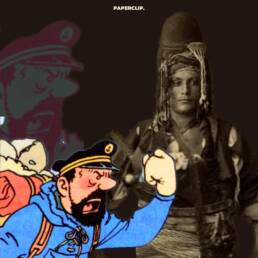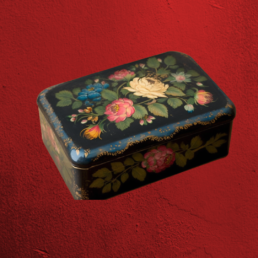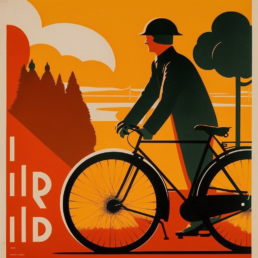In the 1960s Glasgow, the Scottish city, became home to a strange but fabulously enticing curry war; something delectable emerged from it – the Chicken Tikka Masala, that still holds the people of the British Isles in raptures.
Culinary ties between the subcontinent and the British Isles were spearheaded by trade and the seamen who ferried the goods. The first establishment dedicated to Indian cuisine was supposedly the Hindostanee Coffee House at 34 George Street, Portman Square.
Even the Empress Queen Victoria was said to have an affinity towards the curry. As the years went by, Indian cuisine didn’t only become a mainstay for migrants or men of the sea but for British people also, who took an immense liking to it.
By the beginning of the 20th century, London was engulfed in curry wars, and Indian restaurants were opening up everywhere. The Veeraswamy was established in 1926, The Taj Mahal, Brighton; Taj Mahal, Oxford; Taj Mahal Northampton; all came up in a short span of time.
After India’s independence, in the 1950s, a new wave of migrants started arriving in the midlands and also in Scotland, mainly in Glasgow. Among these new waves of migrants was a man called Noor Mohammed.
It was Noor who supposedly opened Glasgow’s first proper Indian restaurant, the Green Gates at Bank Street, selling Indian curries for 2 shillings. Though Glasgow was not new to the curry, given its historic naval and military ties with the subcontinent, this was something new.
Noor with his son Ali Ahmed Aslam would later go on to establish the Shish Mahal on Gibson Street. With dinner-jacketed waiters and flock wallpaper, they were serving not only Indian dishes but a wholesome experience.
Opposite the Shish, another icon came up, Koh-i-Noor – supposedly set up by one of Noor’s cousins. Others followed suit – the Maharajah, the Himalaya, and the Shalimar, all opened across the street, this leading to Gibson Street’s nickname ‘Curry Canyon’.
The scent of Gibson Street on a Friday night filled with lager fumes and exotic spices of the East, was an experience in itself. Like the Old Firm, Curry-mad Glaswegians had their favorites here too. Shish supporters would regularly throw culinary insults at the Koh-I-Noor crew and vice versa.
But we haven’t talked about the most important part yet: how does this all relate to the birth of Britain’s favorite curry dish? Now there are many supposed legends surrounding the Chicken Tikka Masala.
The first to claim its invention are descendants of Sultan Ahmed Ansari who owned The Taj Mahal in Glasgow. Some food historians claim that the dish ‘was invented probably by a Bangladeshi chef’, but the most widely believed origins take us back to Ali Ahmed Aslam.
As the story goes, sometime in 1971, a customer eating at Shish Mahal grumbled about his chicken being too dry. It was at once whisked back to the kitchen where Ali, on a liquid diet thanks to a bout of ulcer, was having tomato soup.
Ali at once improvised and insisted that the dry chicken curry be embellished with a touch of his tomato soup and a sprinkle of spice. And there it happened. Call it divine intervention or sheer luck, the customer was overjoyed, and a star was born.
Gibson’s street curry wars didn’t last long. The Shish had to move in the 1980s and was soon followed by the Koh-i-Noor, the ‘new’ Shish opened in nearby Park Road, and the Koh-i-Noor in North Street, at Charing Cross.
The dish, however, the Tikka Masala with its creamy sauce and spiced-up chicken, had spread like a gastronomic wildfire. In 2001, British politician Robin Cook, then the British Foreign Secretary, said that “chicken tikka masala is a British national dish”.
In 2009, Labour MP Mohammad Sarwar put forth an Early Day Motion in the House of Commons requesting Parliament to legally recognize Glasgow as the home of chicken tikka masala. The motion was eventually rejected.
But curry-loving Glaswegians still consider Ali Ahmed Aslam or ‘Super Ali’, as he is fondly called, as the true proprietor of the CTM. The Shish even today bears testimony to the South Asian Community’s entrepreneurship and hard work.
As for the CTM, it is all over the place now – in London, Northampton, Brick Lane, Southall, Glasgow, and Midlands. You may find it in any Indian eatery, just make sure it is spiced up perfectly, or you may have to go to the Shish to taste their near-perfect rendition of the dish.
Sources: https://www.heraldscotland.com/news/15211047.lost-glasgow-one-super-ali-glasgow-loves/, History of Indian Restaurants in UK (Facebook page of Kohinoor Indian Restaurant and Takeaway), https://theculturetrip.com/europe/united-kingdom/scotland/articles/a-brief-history-of-chicken-tikka-masala/




